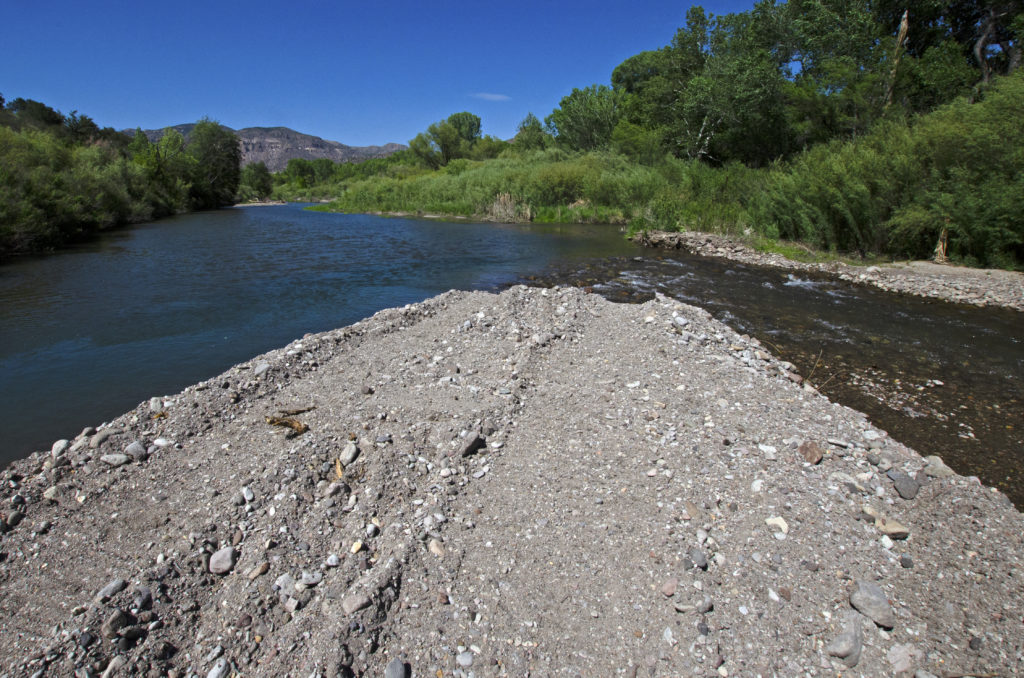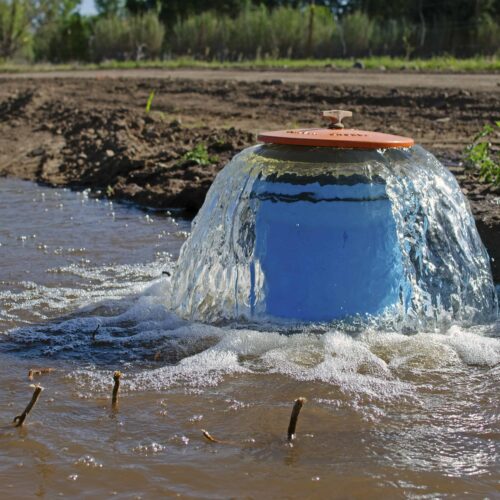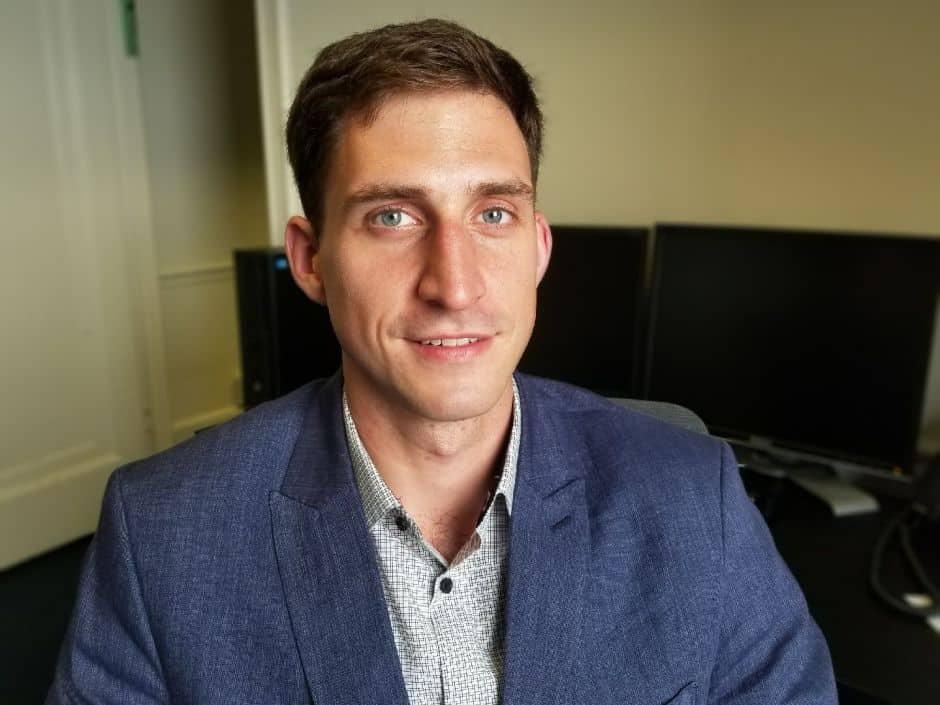This story was published in partnership with The Weather Channel.
Introduction
GILA, N.M. — Standing beside his pickup truck on the crest of a slight hill, Anthony Gutierrez surveyed the Cliff-Gila Valley in southwest New Mexico. Around him, a patchwork of fields spread from the meandering Gila River, its water a shimmering gold as it flowed through the irrigation ditches that sustain farms.
“Growing up here, what I saw was an agricultural economy. All of these fields were planted,” he said, waving a hand toward pastures that now support only grass and alfalfa for cow feed.
Gutierrez is the executive director of the New Mexico Central Arizona Project (CAP) Entity, the organization in charge of planning a controversial project to divert more water from the river for agriculture. With tens of millions of dollars in federal funding available to secure water rights for New Mexican irrigators, the proposed diversion pits farmers who want to increase the valley’s production against environmentalists who say the project will waste money that could be used to mitigate water scarcity in the Southwest.
Water is increasingly valuable as climate change warps weather patterns in the region. Droughts are lengthening, snowpack melts earlier and storms have intensified, complicating agriculture and efforts to keep water flowing in already dry places.
The Gila isn’t immune. Diversion opponents argue climate change could decrease the river’s flow to the point that New Mexico won’t legally be able to pull more water.
“We see the folly of spending tens of millions of dollars on diversion infrastructure for a project that will be impacted by flow reductions due to climate change,” said Gila Conservation Coalition Executive Director Allyson Siwik, who helps lead the charge against it. “The money is better spent on projects that can increase resiliency in our water supplies.”
From its headwaters in the country’s oldest protected wilderness area, the river flows to Arizona, where it vanishes into the sand south of Phoenix. It reemerges farther west before joining the Colorado River at the Arizona-California-Mexico border. Along its winding path, the Gila is subject to the region’s complex water laws and conflicts.

Money sparked this battle over the Gila’s future, specifically two sources of federal funds worth $100 million when they were approved 15 years ago. A business plan prepared in May for the CAP Entity estimated a $128 million price tag for the Gila diversion — a permanent structure in the river using gates to push water into ditches — and related infrastructure on nearby waterways.
Both sides of the fight now expect a maximum of $56 million in federal funding for the diversion. Facing a smaller budget, the CAP Entity announced in early July that it would reduce the scope of the project.
Still, diversion proponents call it the last opportunity for rights to “new water.”
Water is “more valuable than oil when it really comes down to it. Securing that water is the No. 1 priority,” Gutierrez said.
Paper water
Water rights on paper and water in reality are two very different things, especially in the American West and Southwest.
Agreements among states and tribes mean the diversion could draw a set amount of water from the snowpack-fed Gila, likely only during high flow events.
“As the climate warms up, which it is doing rapidly and unambiguously across the Southwest, snowpack is declining,” said David Gutzler, who researches climatology as a professor at the University of New Mexico’s Department of Earth and Planetary Sciences.

Gutzler predicts that much of the region will see little or no snowpack by the end of the century. While it’s not yet clear how this will impact the total volume of water flowing through the Gila in a given year, he said, it would change the waterway from a more predictable “snowfed river into a flashy thunderstorm-driven river.”
In April, American Rivers, an advocacy group focused on preserving waterways, labeled the Gila the country’s most at-risk river due to climate change and the diversion proposal.
Diversion opponents would rather see the available money spent to soften local impacts of climate change. They point to projects such as the Grant County Regional Water Plan, which would cost less than $20 million for wells, pipelines and a water treatment plant to serve parts of the county currently leasing water from a mining company. Democratic Rep. Rodolpho Martinez introduced a bill in the state Legislature to allocate $12 million to provide water to the county, but it lacked the necessary support, he said, and wasn’t put to a vote this year. Other water conservation ideas include wastewater reuse projects and switching from flood to drip irrigation.
A group of irrigation ditch associations, meanwhile, is working on a plan for a cheaper and less intrusive diversion — one that would use rocks placed in the river instead of gates. That idea has more support from local environmentalists.
In part due to the high cost of the larger diversion project, farmers talk about transitioning to higher value crops, such as garlic or onions. But the region hasn’t made any large shift from pasture yet.
Environmentalists say it doesn’t make sense to sacrifice a healthy river to inefficient flood irrigation used to grow grass.
Even with snowpack at risk, the Gila is at its healthiest point in decades after advocates fought to let it naturally meander and to remove cattle from parts of its riparian zone, the ecosystem along streams and rivers. The river’s banks are shaded by impressive cottonwood trees that provide refuge from the heat. When the wind blows, it rustles the leafy canopy, stirring up a strong fragrance from rich flora.
Who We Are
The Center for Public Integrity is an independent, investigative newsroom that exposes betrayals of the public trust by powerful interests.
Studies show the vast majority of the region’s riparian habitats have vanished, and the Gila is what Siwik called “one of the last of the last”: a river undammed along its length in New Mexico. Seven threatened or endangered species of fish, birds, snakes and frogs live in the habitat the river provides.
“What are we going to do, just keep wrecking these places until there’s nothing left?” she said.
Gutierrez said the project’s potential environmental impacts are overstated.
But time is running out for diversion proponents. Under the federal Arizona Water Settlements Act, passed in 2004, the deadline to get environmental approval for the project and unlock funding is Dec. 31.
The Bureau of Reclamation, the federal agency that oversees water in the West, said it will miss that deadline because the CAP Entity changed the scope of the project several times and provided insufficient data for the analysis. Gutierrez said the CAP Entity inherited a project that “was a giant mess” and is appealing to the U.S. Department of the Interior for an extension.
New Mexico Gov. Michelle Lujan Grisham, a Democrat, opposes the project and used a line-item veto in April to halt additional project planning funding. The whole plan is further complicated because a large mining company owns the majority of the valley’s land and water rights and leases them to a farmer.
Joe Runyan, a local farmer who represents his irrigation association, said it would be foolhardy not to claim the unused water rights that belong to New Mexico. Irrigators whose families hold water rights extending back to the 1800s tell stories of being cheated out of water in past generations and view the diversion as a way to flex political muscle. A former Iditarod champion who never expected to become a Southwestern farmer, Runyan sees access to the region’s water as another sort of competition — one often dominated by Arizona’s downstream users.
“All their water projects have been subsidized,” Runyan said. “Why shouldn’t New Mexico farmers have a subsidized diversion?”

The Southwest’s melting water supplies
As climate change increases temperatures and droughts, other vital waterways in the region are even more at risk.
In southern California, the Salton Sea has helped support an agricultural region since an irrigation system failed in 1905 and dumped Colorado River water into a previously dry basin. Huge strips of farmland extend northwest and southeast from it.
But the lake’s level has fallen about 9 feet, nearly a third of its average depth, since a U.S. Department of Agriculture satellite began collecting data about 25 years ago. The problem is so bad that California is considering a plan to pump in water from Mexico’s Sea of Cortez.
The same satellite tracks data on Utah’s Lake Powell, one of the two major reservoirs on the Colorado River. Its level, although fluctuating more widely than the Salton Sea, is down 100 feet from 25 years ago.
The other reservoir on the Colorado is Lake Mead on the Arizona-Nevada border, which provides water for the more than 2 million residents of the Las Vegas metro area. In the past few years, it has seen its lowest levels since it formed in the 1930s.
The onset of El Niño, a climatic event in which warmer Pacific Ocean temperatures cause heavy precipitation in parts of the country, helped erase drought conditions in the West beginning in February. Scientists predict similar swings in weather conditions will become more severe and commonplace due to climate change.

Arizona has experienced long-term drought since the mid-1990s, and the expert panel that advises the state’s governor on climate conditions recently recommended that Republican Gov. Doug Ducey reaffirm a state of water emergency. The state’s governors have declared the emergency every year since 1999.
“One good, wet season doesn’t alleviate long-term drought that has built up through many years in a warming climate,” the state’s water agency wrote in June.
Water for the nearly 5 million people living in the Phoenix metro area comes mainly from the Colorado, Salt and Verde rivers. More than 90 percent of the metro area’s water supply originates as snowpack. While this has shielded the city from immediate shortages, the city acknowledges that warming temperatures could lead to future water restrictions and higher prices shouldered by consumers.
Higher temperatures also mean peak flows from melting snowpack already come one or two weeks earlier than they did 50 years ago in New Mexico, said Gutzler.
“Climate change is going to make big droughts worse,” he said. Dry conditions, in combination with other aspects of a changing climate, are making “the wildfire season longer and drier and warmer.”
As it is, the Southwest’s water scarcity fuels political tension. Texas and New Mexico have been in court since 2014, with Texas claiming agriculture in New Mexico draws too much water from the Rio Grande and under-delivers it downstream. Further changes to water resources will likely bring more fights.
“Water in the Southwest is gold,” Gutierrez said.
Clarification, Aug. 27, 2019: An earlier version of this story said the Gila River is undammed. It is undammed in New Mexico, but not in Arizona.
Read more in Environment
Environment
While ‘zombie’ mines idle, cleanup and workers suffer in limbo
As the governor of West Virginia and other mine owners warehouse their operations and avoid cleanup, the Trump administration stifles attempts to write rules that could restrict the practice.


Join the conversation
Show Comments